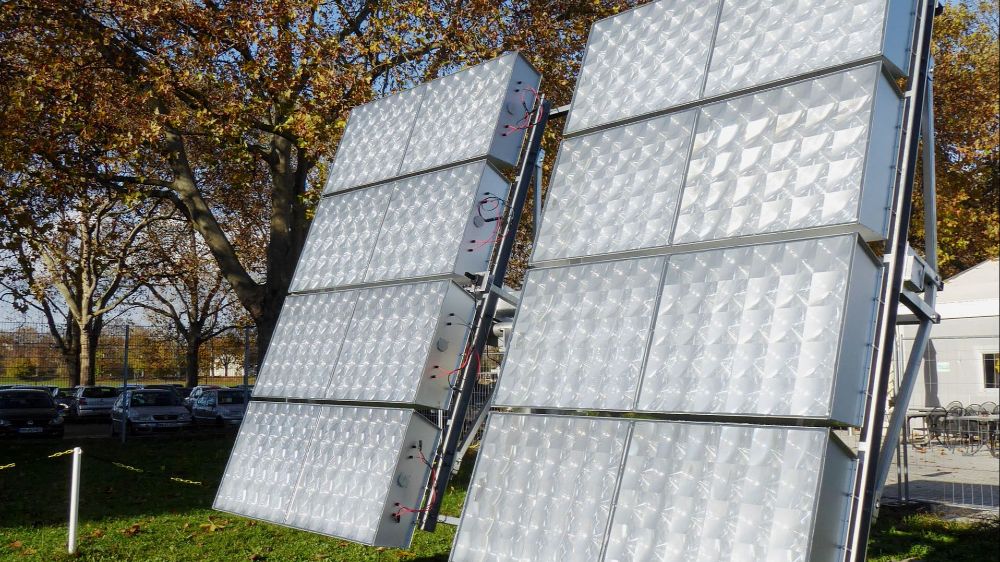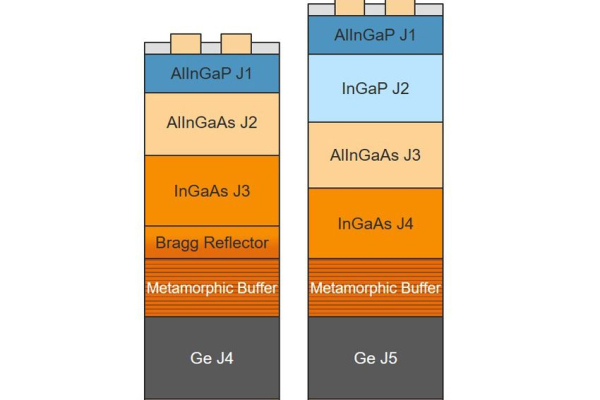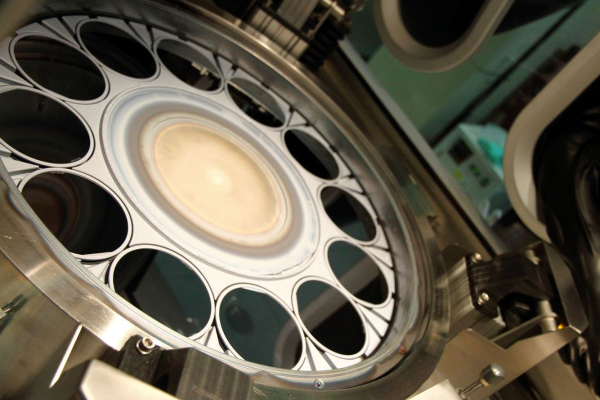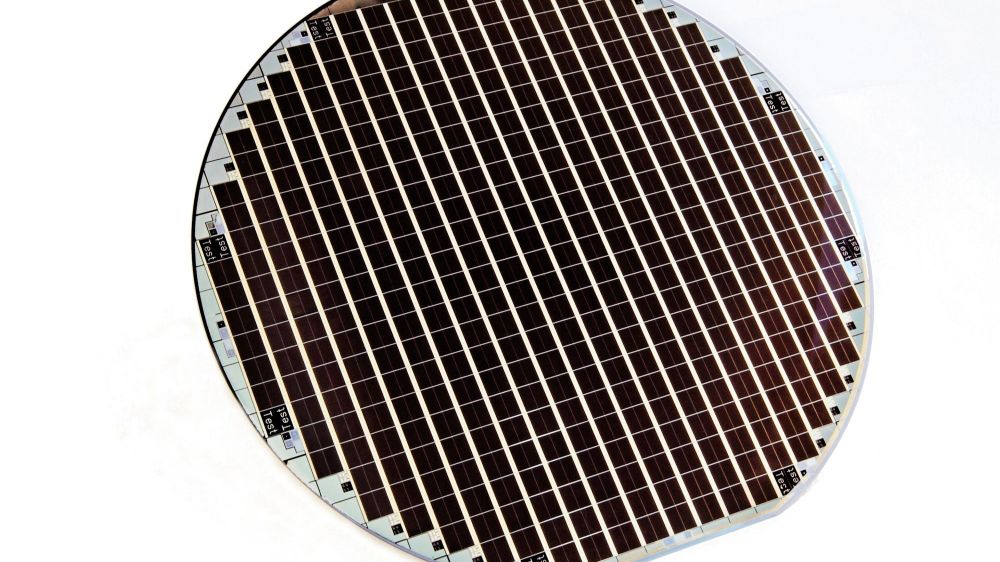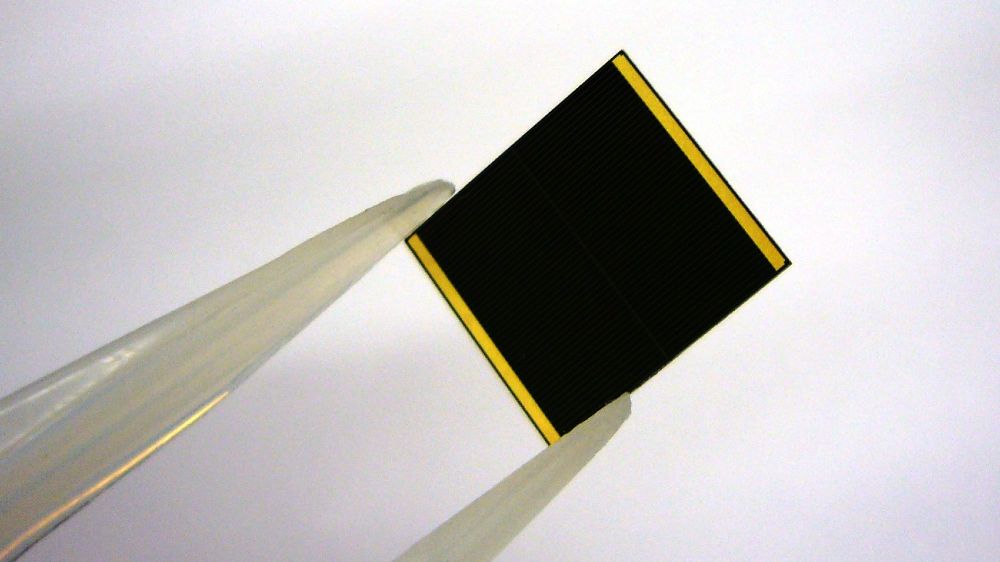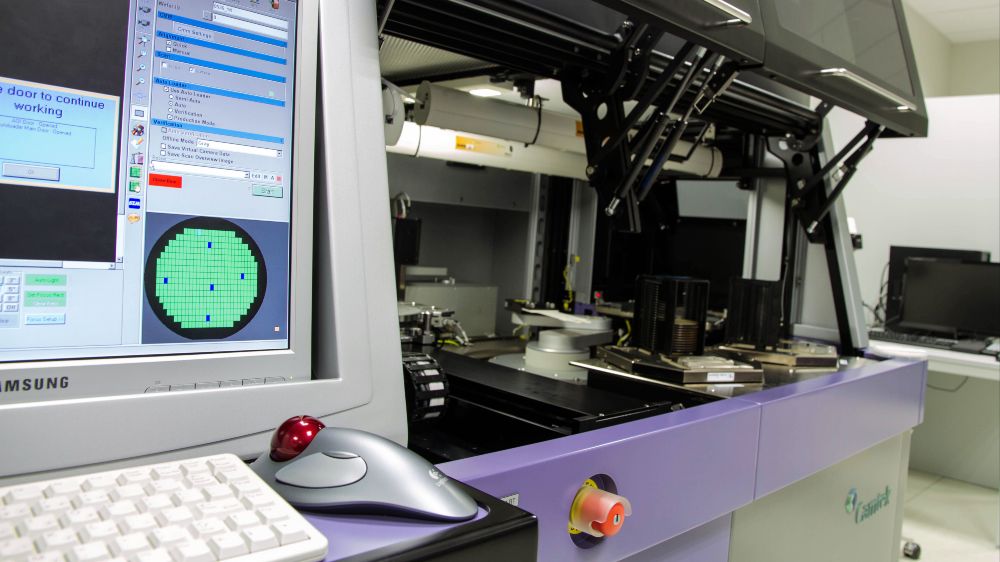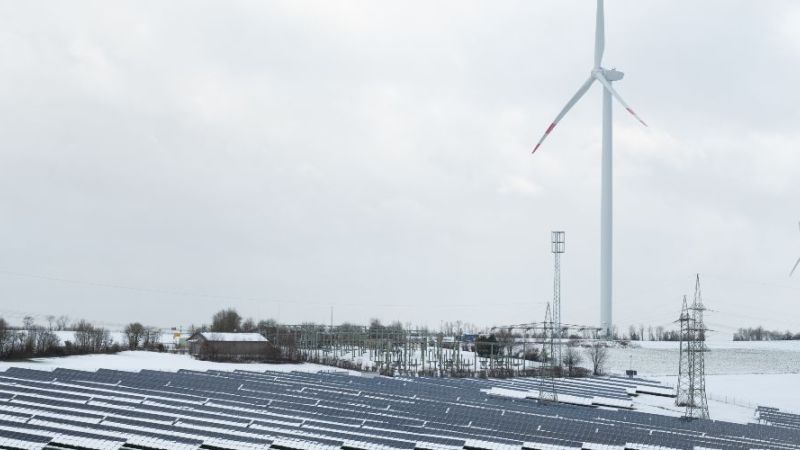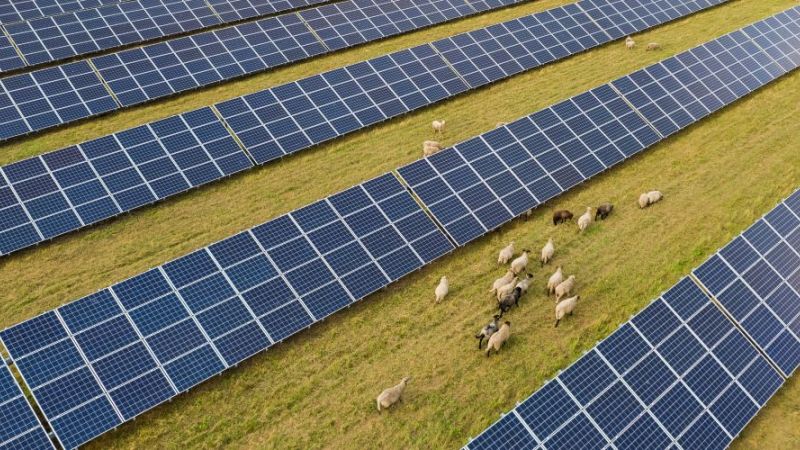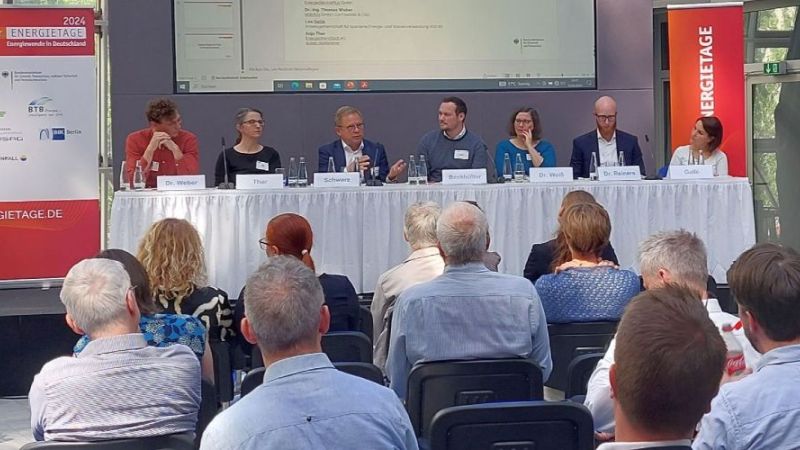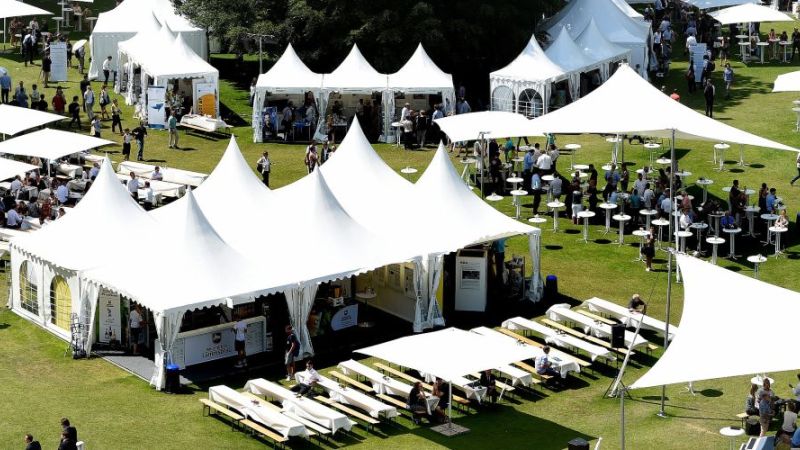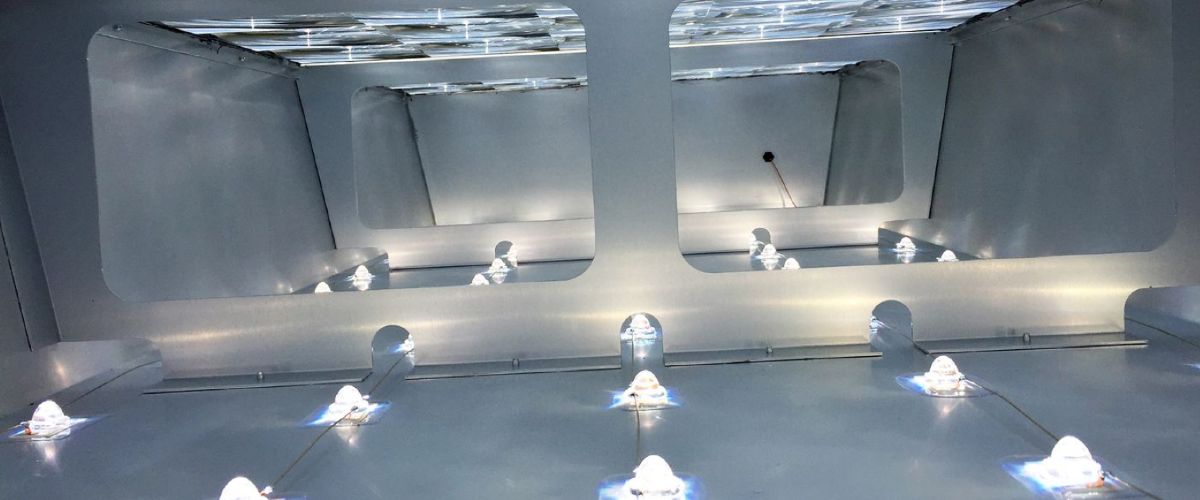 © AZUR SPACE Solar Power GmbH
© AZUR SPACE Solar Power GmbH
Photovoltaics
Module with five-junction solar cell achieves efficiency of 32 per cent
Originally developed as an energy source for space travel, multi-junction solar cells are currently used for concentrated photovoltaics in sunny regions of the Earth. Using high-quality lens systems, the technology currently achieves a module efficiency of around 29 per cent. This high efficiency is due to special multi-junction solar cells made of various semiconductor materials. Within the QuintUMM project, the researchers have developed a new five-junction solar cell, the so-called quintuple solar cell. Modules with these new solar cells achieve an efficiency of up to 32 per cent and thus generate over 10 per cent more energy than systems with triple-junction solar cells.
Concentrated photovoltaics currently uses triple-junction solar cells
Manufacturers of high-concentration photovoltaic systems currently usually use triple-junction solar cells, which consist of three solar cells stacked on top of each other. Each of these partial solar cells converts a certain wavelength range of sunlight into electrical energy. The efficiency of these cells is up to 44 per cent. This is due to the various semiconductor layers, which are usually composed of gallium indium phosphide, indium gallium arsenide and germanium. Triple-junction solar cells use sunlight much more efficiently than silicon solar cells. These cannot use the high-intensity light particles efficiently. Therefore they only achieve a comparatively low voltage. A considerable part of the energy is lost in the form of heat. In contrast, multi-junction solar cells achieve a higher voltage and consequently a higher efficiency. Such solar cells are relatively expensive. They are therefore unsuitable for conventional, full-surface solar modules.
Efficient production of semiconductor stacks with new materials
Engineers use a special method, Metal Organic Vapour Phase Epitaxy (MOVPE), to produce the semiconductor stacks of the multi-junction solar cells. In this process, molecules of the various semiconductor materials are successively deposited from the gas phase on a heated substrate, the germanium wafer. The technical term for this process is epitaxial layer growth. This takes place in a production reactor, which simultaneously deposits various semiconductors on several germanium wafers. Within the research project, the scientists developed this method for the new structure of the five partial solar cells, which are stacked on top of each other. Furthermore, the tertiary and quaternary semiconductor materials (InGaAs, AlInGaAs, InGaP and AlInGaP) have a special material composition.
The individual sub-cells of the multi-junction solar cell are arranged vertically on the germanium wafer and connected internally by tunnel diodes and other functional semiconductor layers. The tunnel diodes serve to interconnect the individual sub-cells in series. This adds up the voltage of the individual cells. In the end, the desired higher output is achieved. The researchers optimised the material composition of the tunnel diodes in further investigations. They are now suitable for use in concentrated photovoltaic systems at 1000 times the concentration of incident solar radiation. Furthermore, the uppermost tunnel diode of the semiconductor stack is particularly transparent. This allows sufficient light to pass through to the four sub-cells below.
Avoiding stresses in the lattice structure
The so-called buffer structure between the individual sub-cells of the multi-junction solar cells is new and innovative. It helps to increase the lattice constants of the crystal structures and absorbs the resulting inner-crystalline tensions between the layers. This means that the lattice constants of the different crystals (semiconductors) no longer have to be identical and the new semiconductor materials can be produced directly on a germanium wafer. Multi-junction solar cells with buffers are called metamorphic.
New five-junction solar cells developed
AZUR SPACE has already developed new metamorphic four-junction solar cells for space applications. Based on this technology, scientists within the QuintUMM research project, short for "Development of metamorphic quintuple solar cells for CPV application", have for the first time developed a metamorphic five-junction solar cell and adapted it to the terrestrial light spectrum. Each of the five semiconductor layers of the multi-junction solar cell absorbs a specific range of the light spectrum. The term "five-junction solar cell" is derived from this structure. Compared to triple-junction solar cells, the new cell utilises the spectrum even more precisely and efficiently. Modules with five-junction solar cells achieve a significantly higher efficiency than modules with triple-junction solar cells.
In additional investigations, the scientists have refined the currently available measurement technology and adapted it to the new multi-junction solar cells. This enables them to test both spectral sensitivity as well as current and voltage data under highly concentrated light (flash lamps with mirrors). This method enabled Fraunhofer ISE to measure a maximum efficiency of currently 42.7 per cent at about 800 times solar concentration.
First application tests successful
The project team rates the results of the first application tests as a particular success. For this purpose, they tested five-junction solar cells in AZUR's own concentrator system. A first long-term test of one week under concentrator standard operating conditions (CSOC) at Fraunhofer ISE in Freiburg already showed an 11 per cent higher energy yield compared to an existing reference system with triple-junction solar cells. The project team is currently assuming that the costs of the entire concentrated photovoltaic system will decrease by at least 10 per cent compared to systems with triple-junction solar cells.
First five-junction solar cells for customers
AZUR SPACE has already produced and tested five-junction solar cells for a customer for the first time. In the course of the year, AZUR SPACE intends to commercially distribute the five-junction solar cell on the market. The target group for the new products are manufacturers of concentrated photovoltaics. These companies plan to install the modules on a gigawatt scale in regions in the Earth's sun belt. In addition, AZUR SPACE plans to use the new multi-junction solar cells in the company's own concentrated photovoltaic system. A new research project is planned for this purpose, which will start this year.

